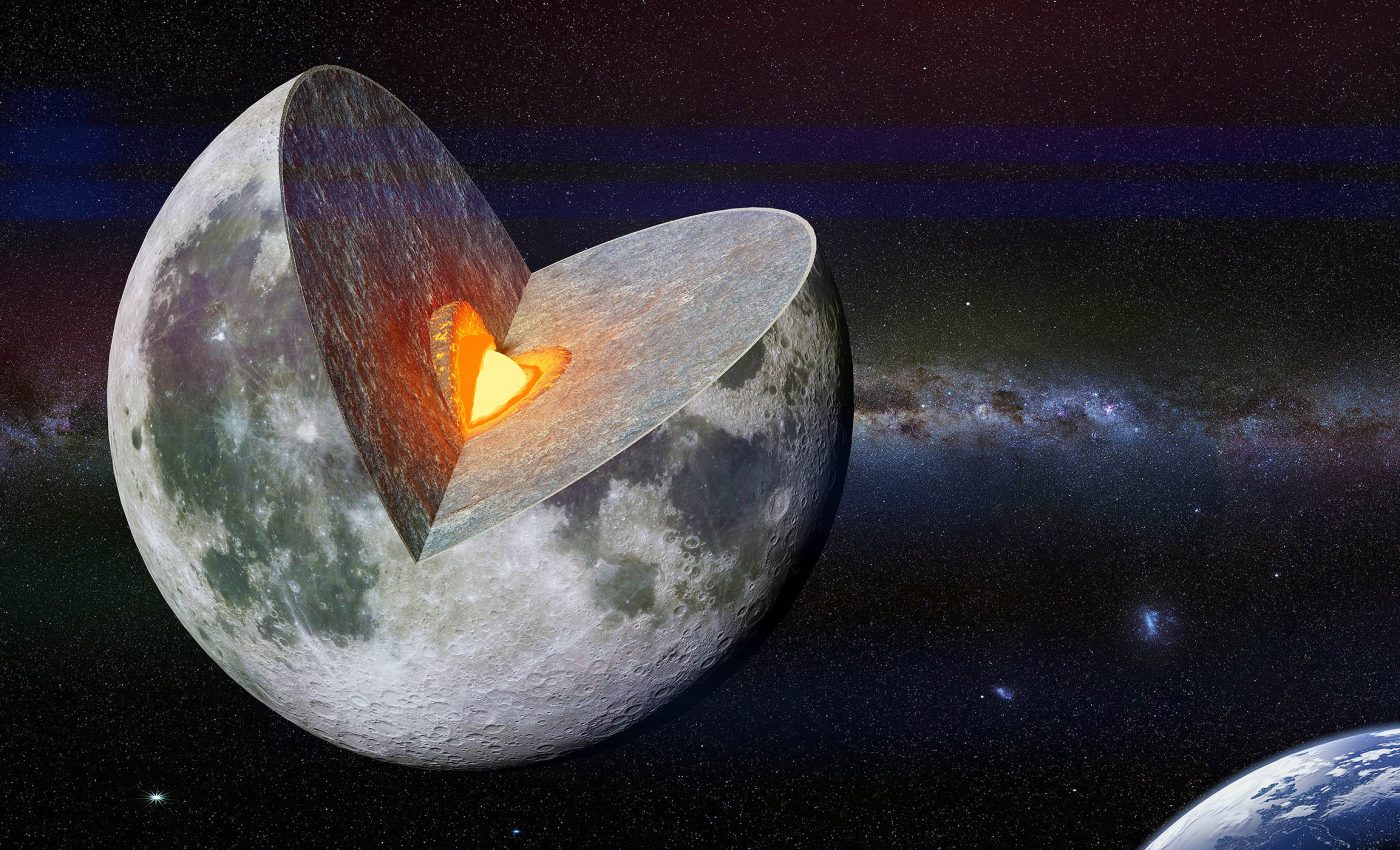
What's inside the Moon's core has long been a mystery, until now
We’ve all spent countless nights gazing at the Moon, lost in its tranquility and splendor. But have you ever wondered what lies beneath the surface at the Moon’s core?
The answer is starting to come into focus, thanks to the work of French Astronomer Arthur Briaud and his team at the French National Centre for Scientific Research (CNRS).
Peeling back the lunar layers
Instead of old wives’ tales about it being made of green cheese, the Moon’s core, as Briaud’s research shows, is a ball of solid metal encased by a liquid outer layer.
But how did they ascertain this?
They worked with existing data from NASA’s Gravity Recovery and Interior Laboratory (GRAIL) mission paired with Lunar Laser Ranging (LLR), which provides accurate measurements between Earth and specific lunar regions.
This combination unveiled the Moon’s interior with unmatched precision — it has a core very similar to the Earth.
Why does the Moon’s core matter?
This isn’t a run-of-the-mill discovery. The existence of a molten outer layer and solid core inside the Moon forces us to rethink our understanding of the moon’s magnetic field.
“Our results question the evolution of the Moon’s magnetic field thanks to its demonstration of the existence of the inner core and support a global mantle overturn scenario that brings substantial insights on the timeline of the lunar bombardment,” Briaud explained.
These revelations lay the groundwork for fresh insights into the Moon’s formative years. Interestingly, the Moon’s inner core has a density similar to iron.
Measuring approximately 160 miles in radius with an outer core roughly 225 miles, the findings seem to suggest that the Moon and Earth are more closely related than we previously thought.
Exploration and future lunar colonies
Understanding the Moon’s core is practical knowledge that’s essential for planning future lunar expeditions.
This is especially true as more nations and businesses show interest in exploring, and possibly inhabiting, the Moon’s surface.
As Briaud points out, “knowing what is on the moon is a giant step in the right direction, both for the present and the future.”
Understanding Earth by studying the Moon
These findings could also impact our understanding of the solar system. By comparing Earth’s and the Moon’s cores, we can recognize patterns and differences that help unravel the secrets of planetary formation.
This raises intriguing questions about the composition of other celestial bodies. What does their internal structure look like, and how does it influence their geological behavior or life-supporting potential?
This research opens up new directions for further lunar studies. With an accurate model of the Moon’s core on their hands, scientists can dive deeper into unanswered questions and polish existing theories.
Looking forward, there’s excitement about more detailed lunar mapping and confirming the solidity of Briaud’s conclusions.
Moon’s core compared to Earth’s core
The Moon’s core is a lot smaller and less dense than Earth’s, which highlights a major difference in their make-up and thermal activities.
While Earth has a molten, metallic core that helps create its strong magnetic field, the Moon’s core is mostly solid with just a tiny molten layer.
Scientists think the Moon’s core is only about 1-2% of its total mass, whereas Earth’s core makes up around 15%. Both cores are mostly made of iron, but the Moon has less nickel and other metals.
Because its core is smaller and mostly solid, the Moon doesn’t experience the same geological activity as Earth. It doesn’t have a significant magnetic field, which affects things like surface temperature and how it interacts with solar radiation.
Earth’s core drives plate tectonics and volcanic activity, shaping the landscape and supporting life. In contrast, the Moon’s core is pretty much inactive, leaving it geologically quiet and ancient, with surface features that have barely changed over billions of years.
Future research on the Moon’s core
Why should you, as a layperson, care about these discoveries?
Apart from satisfying your intellectual curiosity, these findings could bolster technological advancement, improve our space exploration capabilities, and maybe even inspire innovations that directly benefit life on Earth.
Plus, the Moon plays a pivotal role in maintaining our planet’s stability — influencing tides and potentially impacting climate patterns.
Why the inside matters
To sum it all up, the Moon has a complex core, remarkably similar to Earth’s own. Arthur Briaud’s research, utilizing NASA’s GRAIL data and advanced laser ranging techniques, has given us a clearer view of what lies beneath the moon’s surface.
These discoveries have significant implications for future space exploration, technological advancements, and our understanding of the Moon and beyond.
So the next time you look up at the moon, remember — there’s a world of wonders hidden beneath its silent façade.
The full study was published in the journal Nature.
—–
Like what you read? Subscribe to our newsletter for engaging articles, exclusive content, and the latest updates.
Check us out on EarthSnap, a free app brought to you by Eric Ralls and Earth.com.
—–













